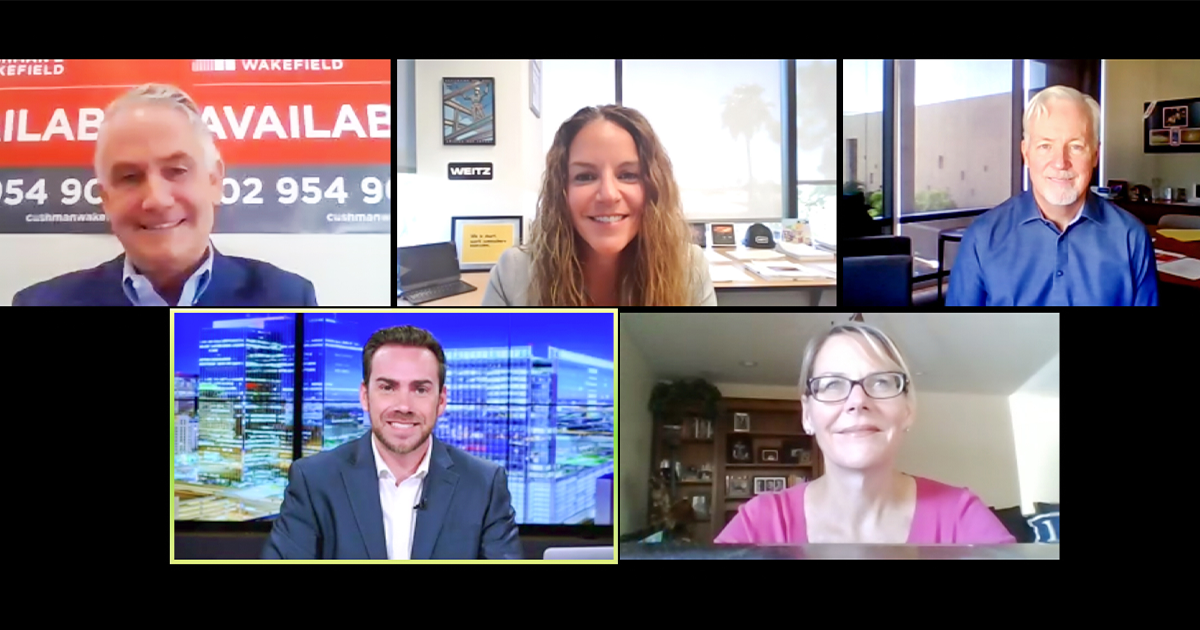

Regional Report: Construction, Housing and Real Estate
Published: 04/23/2020
Updated: 04/17/2023
A GPEC Virtual Series
There isn’t a sector COVID-19 hasn’t changed and that includes construction, housing and real estate. On Wednesday, the Greater Phoenix Economic Council (GPEC) hosted the latest installment of our virtual series, ‘Regional Report,’ where we explore industries in Greater Phoenix impacted by the pandemic. To get a detailed update on changes and projections within these businesses, we hosted an expert panel composed of the following:
- Bryon Carney, managing principle, Cushman & Wakefield
- Kim Davids, general manager, Weitz
- Courtney Gilstrap LeVinus, president & CEO, Arizona Multihousing Association
- Andy Warren, president, Maracay Homes
We hear a lot about frontline workers putting themselves in harm’s way to serve our communities, and our construction personnel are among them.
“Our job sites are out there still working to build the future for Arizona,” said Kim Davids, general manager at Weitz.
While so many industries and jobs have come to a complete stand-still, construction and housing have been deemed ‘Essential Services,’ and Andy Warren, president at Maracay Homes, illustrated how that’s allowed his organization to continue servicing Greater Phoenix residents on a massive scale.
“Hundreds of thousands of people right now are in the process of having their homes built and if that was to stop it would create sort of an abrupt end to many people lives who have to be out of current residences or leases that are expiring,” he said. “There really is some real merit to having residential construction considered an essential industry. People are appreciating the importance of having a safe home more than ever before.”
2019 was a great year for home construction and sales activity because Greater Phoenix had a healthy match between buyers and sellers. COVID-19 has prompted significant industry shift.
“As the entire world and local economy shuts down, and people are staying home, there has been a decrease in demand,” Warren said. “There also been a decrease in supply, so what was already a very tight amount of supply has been shrinking as well. In the short-term we’re expecting values to remain solid because of this tension between supply and demand.”
Commercial real estate was also booming prior to COVID-19, but that has changed dramatically.
“We were seeing large tenants coming to our market and leasing huge chunks of space,” said Bryon Carney, managing principle at Cushman & Wakefield. “Six to eight weeks ago it all came to a screeching halt. All asset classes have experienced real pain in leasing activity.”
Carney did share some positive news.
“In the past week, we have seen a slight increase in inquiries by tenant rep brokers.”
The multihousing and apartment industries we’re also well-positioned and healthy prior to COVID-19, contributing $3.8 billion in economic output.
“About mid-March the COVID-19 freight train hit our industry as it did so many,” said Courtney Gilstrap LeVinus, president & CEO at Arizona Multihousing Association. “A lot of private housing providers essentially became public housing providers overnight without any compensation. That’s really been one of the most difficult things we’ve had as an industry.”
There was a lot of concern about rent payments for April 1, with the industry bracing for roughly 40-50 percent of residents not making payment. Fortunately, only 16 percent were delinquent nationally. Gilstrap LeVinus caveated that figure noting it’s likely much higher, closer to 30-40 percent, with May and June being key industry benchmarks.
“We really have to work together to get through this and more resources are needed out there,” she said. “We are still cautiously optimistic about Arizona, and certainly the market in the Valley. We still anticipate job growth once this is all over.”
Optimism is still a silver lining in all of this, and Greater Phoenix will rebound.
“Phoenix is such a great place to create jobs,” said Warren. “Long-term I think it’s going to bode well for Phoenix.”